I have such an interest in learning new things about Victorian culture. Last year I discovered that clovers and pigs were popular symbols to represent the start of a new year and were featured on greeting cards for decades. I wondered if there was a similar thing to learn about 19th-century Christmas cards and loved where my research took me. For instance, did you know that a picture of a dead bird could symbolize good fortune this time of year? Or that a cringe-worthy illustration of a devil could send well wishes?
Oh, those Victorians!
As you get ready to open cards this season I hope you will keep some of these themes in mind and perhaps count yourself lucky that your cards are more pleasant and more straightforward.
Victorian Christmas cards: how it started
The tradition of sending Christmas cards is less than a hundred years old. It began shortly after the development of the postage stamp system in England and by none other than the Director o the Victoria & Albert Museum, Sir Henry Cole. In 1843 he commissioned a card to “perpetuate kind recollections between Dear Friends.” Beginning with a run of just 1,000 copies, it was a hit and started a trend that continues to this day.
Cole’s design was a far cry from the cards included in this post. It featured scenes of giving to the poor along with a lovely image of a family in the middle of a holiday toast. And while it makes a lot more sense to those who view it today than others from the Victorian era, it had its own issues. Distributed in the midst of the temperance movement some felt it encouraged young people to drink.
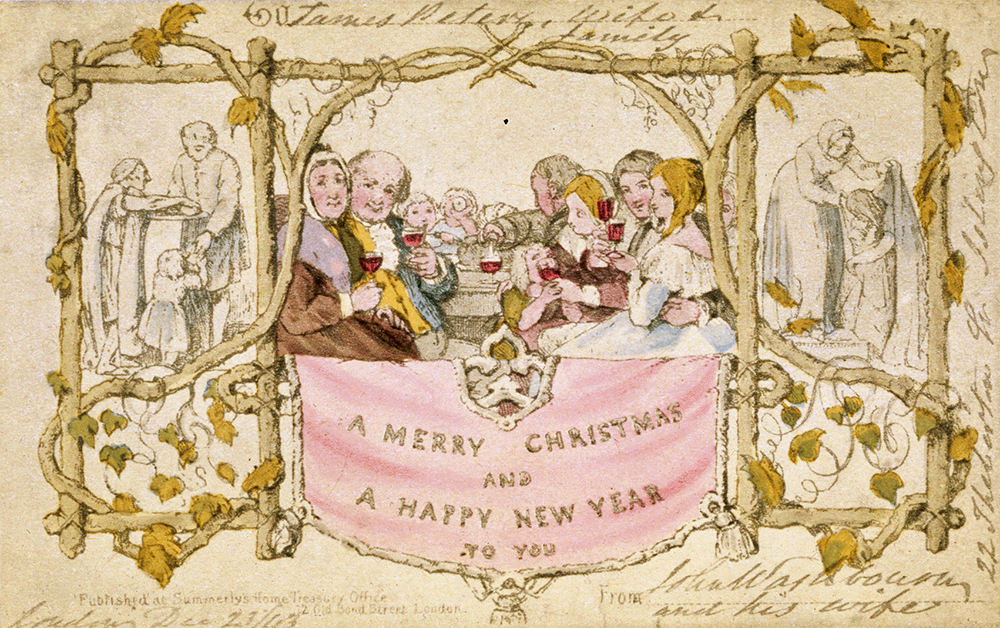
How it went
Christmas cards really hit their stride in the 1880s. By that time countless options were available and their content provides a unique look into 19th-century culture and beliefs. Many of them are outright bizarre to us today; depicting insects, devils, and dead birds. Says American history professor Penne Restad for History.com:
“I believe the cultural interest in fairies, secret places and strange creatures that developed, maybe beginning with seances, elves and so on, in the Victorian era, may have something to do with some of the fantastical Christmas cards.”
Such “fantastical Christmas cards” were a lot more widespread than I realized, and a lot more troubling! Let’s take a look.
The Devil and Mr. Claus
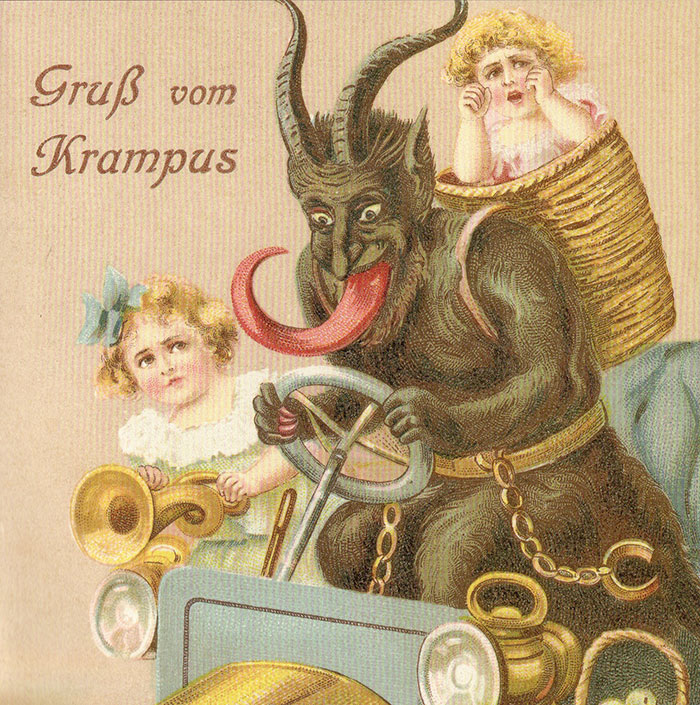
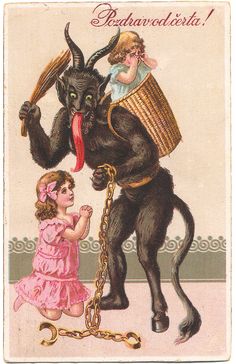
So, why the evil imagery? According to History.com:
“An English legend popular during the Victorian era said that St. Nicholas recruited the Devil to help with his deliveries. Together, they determined which children had been naughty or nice. The Devil, who appeared under various guises, kidnapped the disobedient kids and beat them with a stick. Santa is the creepy antihero on a variety of Victorian-era holiday cards, where he can be seen peeking through windows and spying on children. The Devil is disguised as Krampus on some, making off on sleds and in automobiles with the children deemed naughty.”
Dead birds?
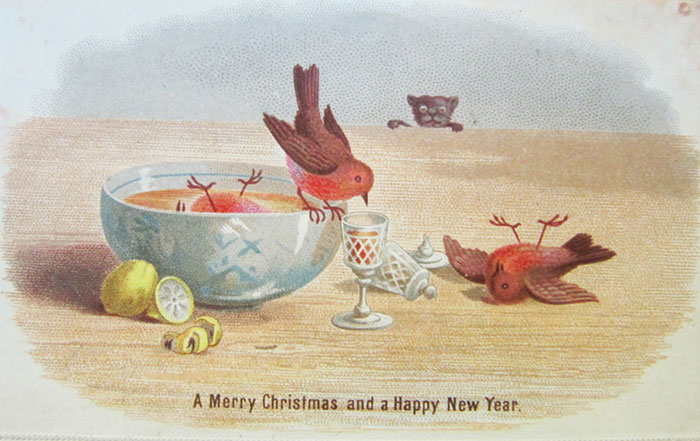
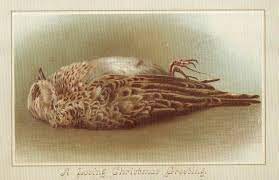
So, what’s with the dead birds? In the blog post Why Are There Dead Birds on Victorian Christmas Cards? Writer Allison Meier writes:
“The image of a dead bird in the snow is similar to the popular “Babe in the Woods” motif of children who are in their mortal sleep in the forest, and may have likewise been a call to empathy for the less fortunate. John Grossman, author of Christmas Curiosities, told Tea Tree Library that the cards were “bound to elicit Victorian sympathy and may reference common stories of poor children freezing to death at Christmas…However, it wasn’t necessarily such a tempus fugit symbol. Hunter Oatman-Stanford at Collectors Weekly noted that the birds are often robins and wrens, and that “killing a wren or robin was once a good-luck ritual performed in late December.” Specifically, the Irish St. Stephen’s Day on December 26 is known as “Wren Day,” with a traditional hunt of the bird (albeit now a fake one on a pole, although that wasn’t always the case). So receiving a card with the little prone bird, feet curled in rigor mortis, could be meant to wish nothing more than good cheer on the new year.”
Is that safe?
Another theme I’ve noticed on Victorian Christmas cards is that of children acting out very adult roles or being placed in extremely dangerous situations, such as the one below.
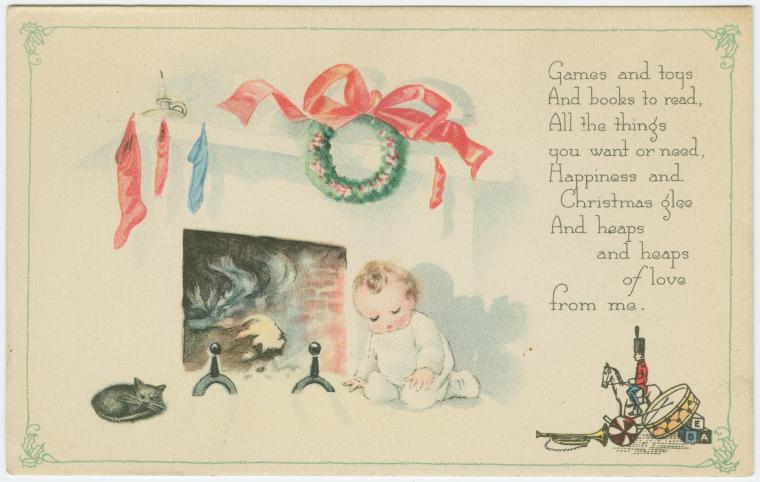
I can safely say that I found more Victorian Christmas cards featuring children than adults, although I wasn’t able to find much on why this is. Perhaps a symbol of rebirth or innocence?
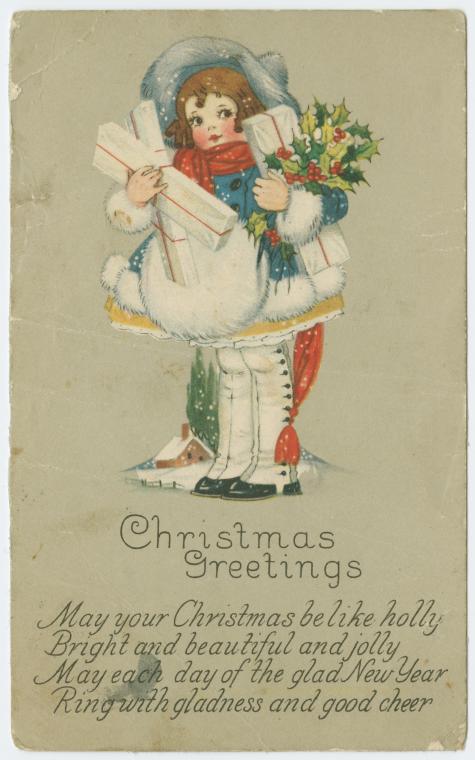
Lobsters
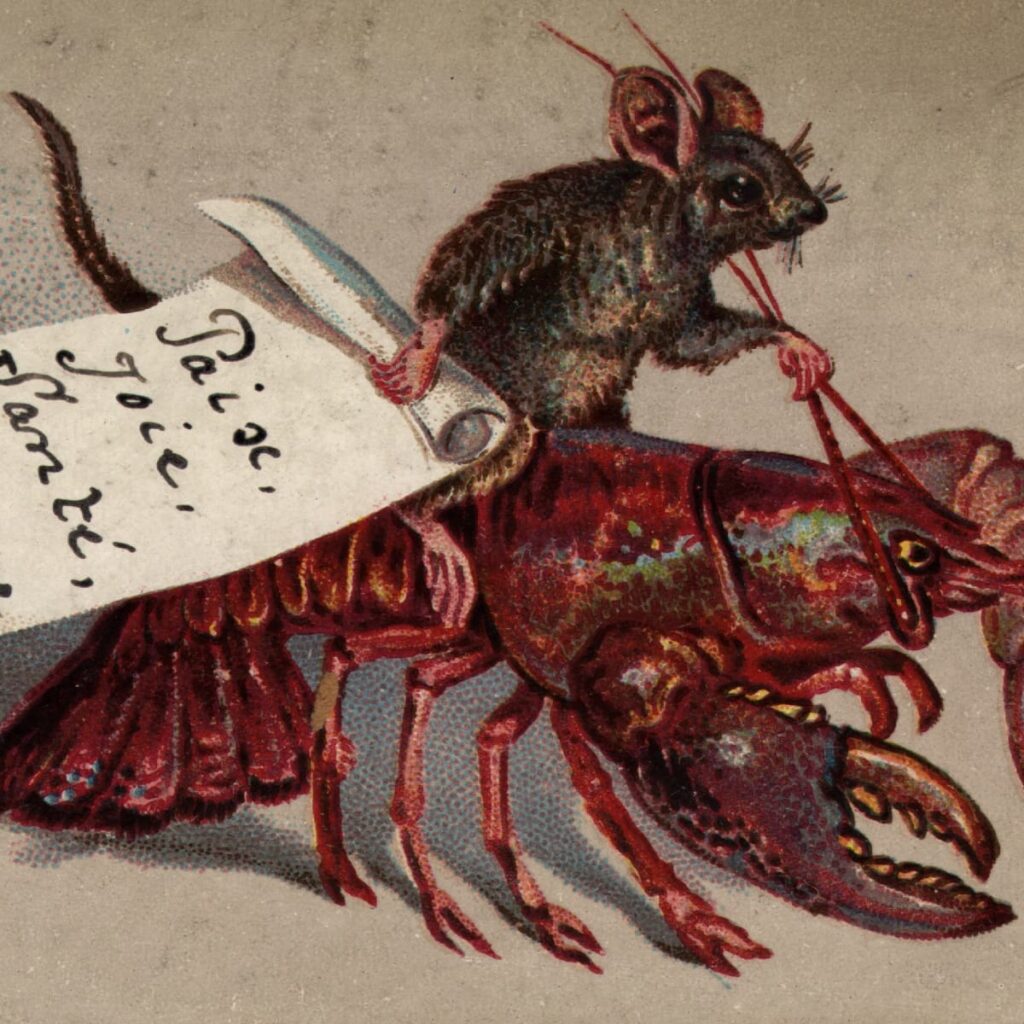
I found many Victorian Christmas cards featuring lobsters. The rat? I’m not so sure. According to ArtUK.com:
“Like all representations of meat, game and shellfish, the lobster is most commonly thought to symbolise wealth, gluttony and temptation…Some say the lobster is an allusion to the Resurrection, while others believe that the lobster represents unpredictability – due to its ability to crawl both forward and backward. Whatever your interpretation, it is safe to say that this crustacean has remained a powerful symbol for artists and designers, as popular now as it was then.”
Fancy frogs
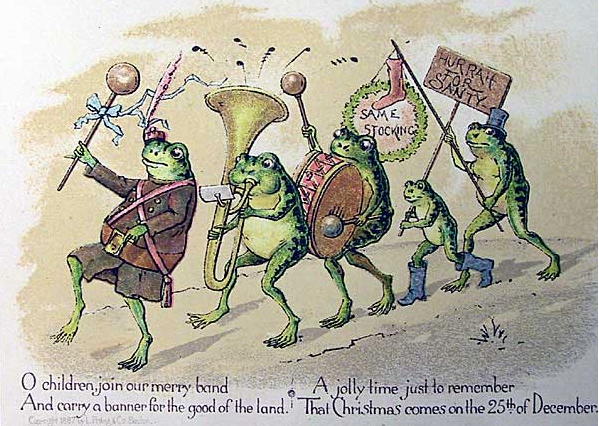
The reason for so many frogs on Victorian greeting cards is one that eludes even scholars. Says Vault of Thoughts:
“For centuries, Europeans regarded the frog as a harbinger of death or doom — some would say because of the poison carried by some species, and others due to the belief that witches often took frogs or toads as familiars. They were associated with heretics and sinners in the Middle Ages by such notable figures as Dante and Martin Luther. Yet frogs were also seen as Christ symbols.
Scholar Simona Cohen in Animals as Disguised Symbols in Renaissance Art explains that Pliny the Elder in his Natural History believed frogs died in winter and were born again in the spring. She goes on to explain how emblem books of the Renaissance included images of frogs as symbolic of Christ’s resurrection. Other forms of western art also embraced the idea of the frog’s transformation from a tadpole as a sort of death and rebirth.”
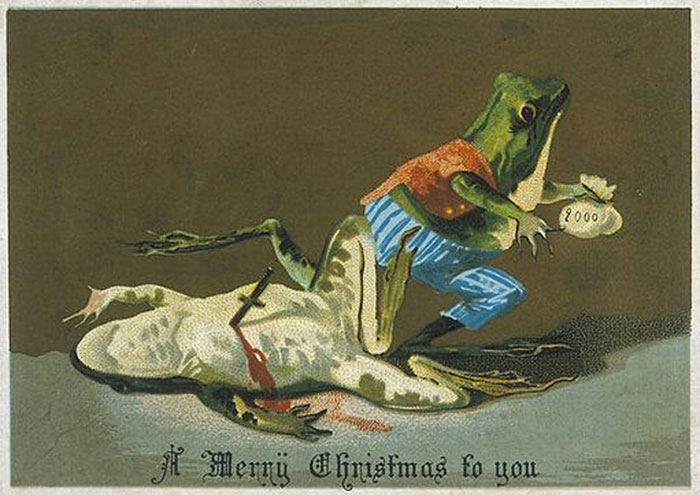
More head-scratching Victorian Christmas cards
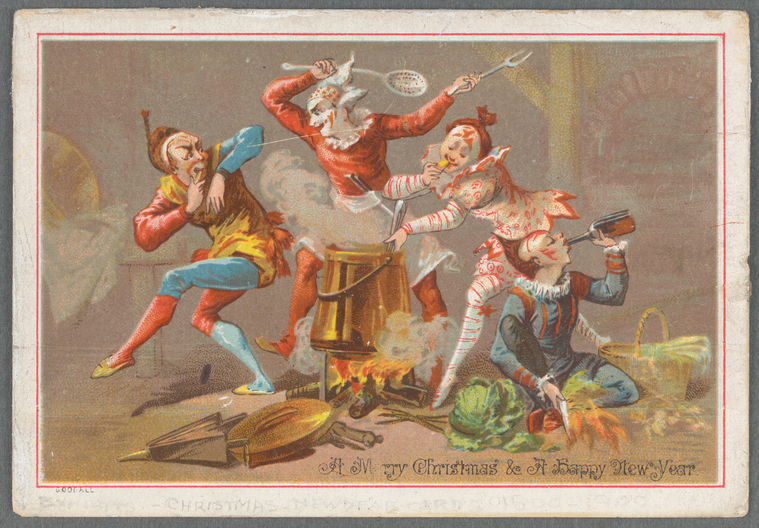

1880
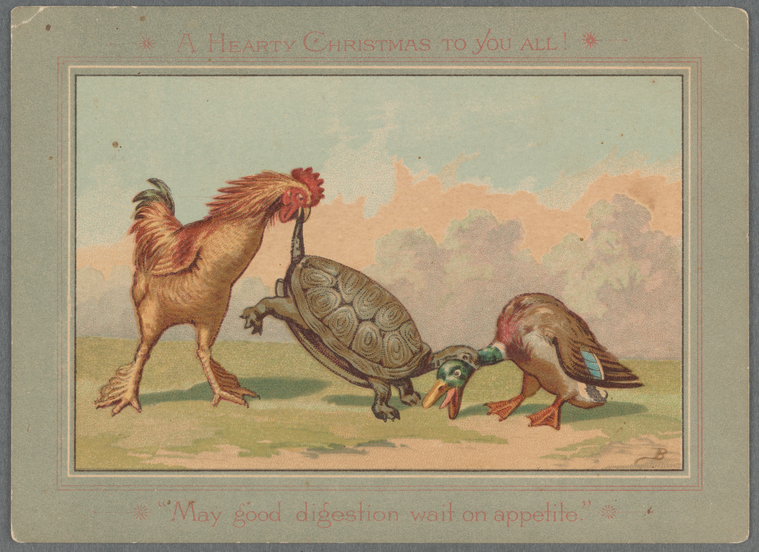
1880-1900
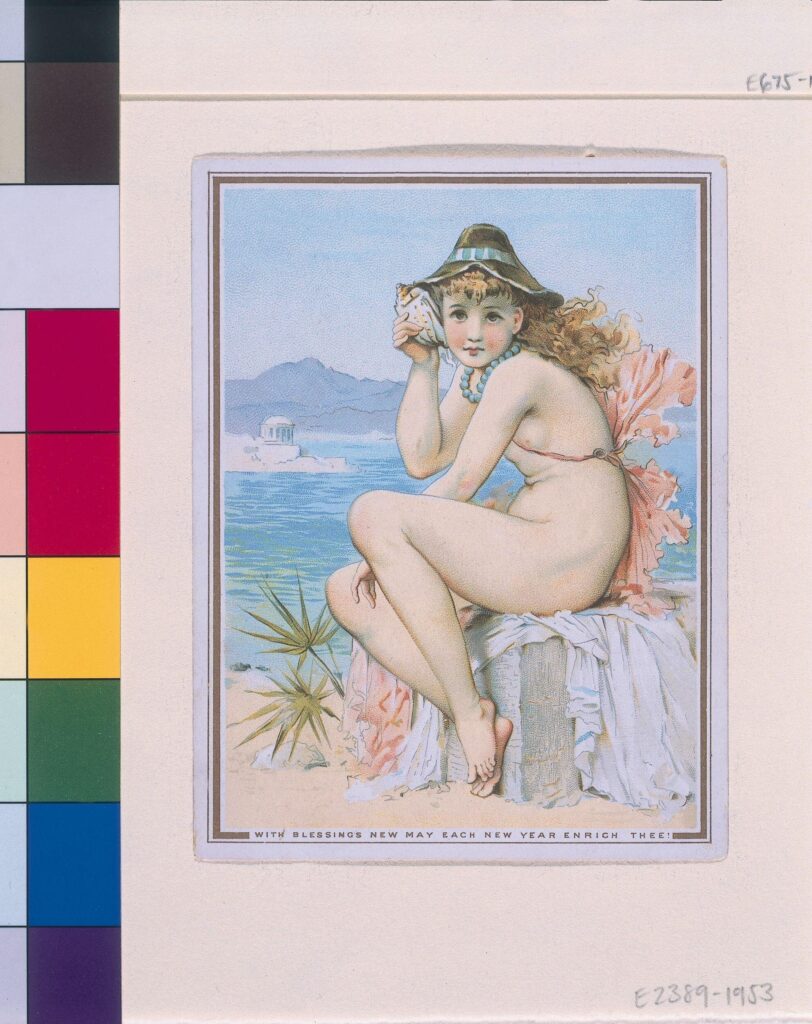
`1880

1890
More cards and letters through time:
Victorian letter writing rules

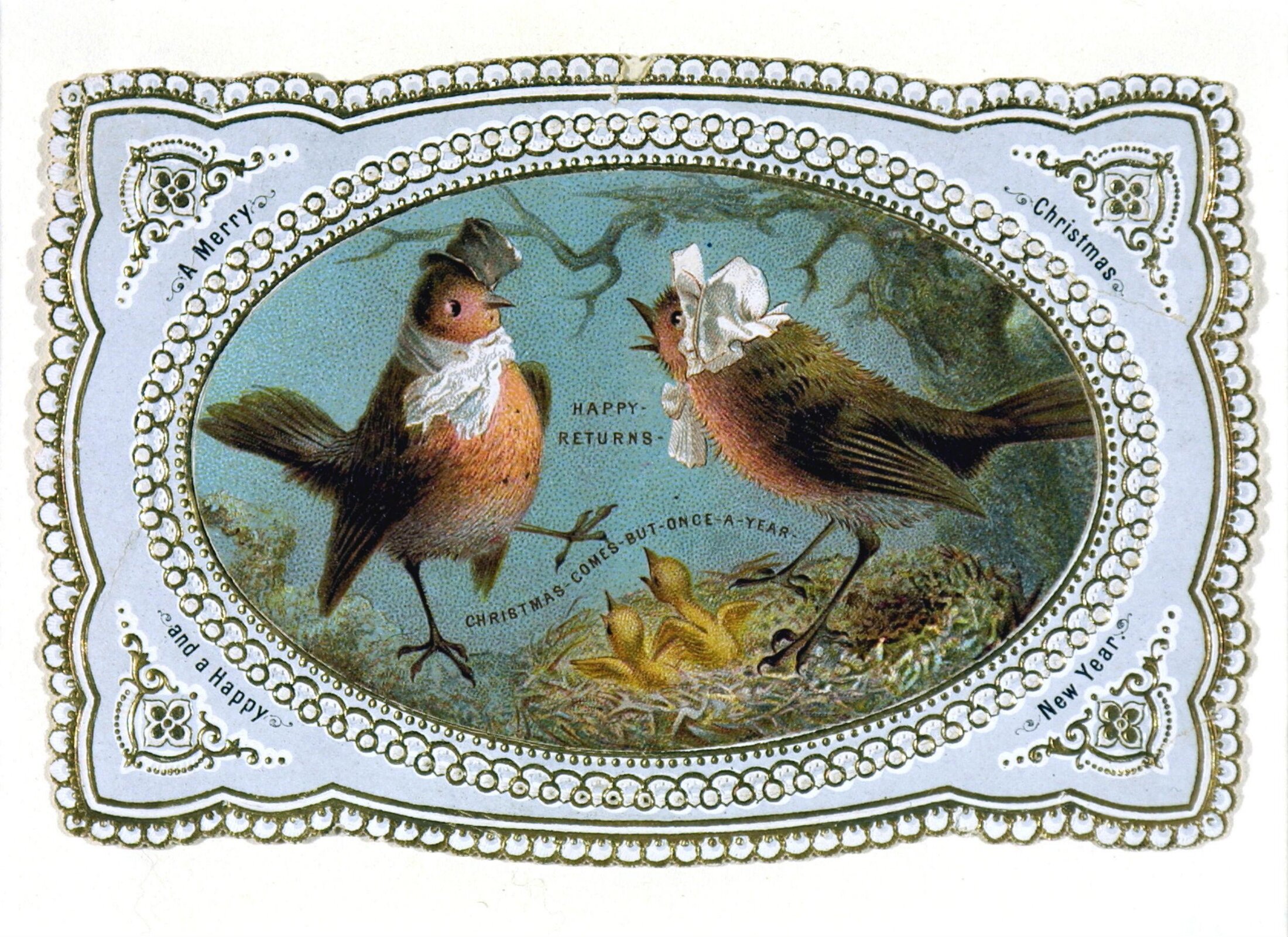
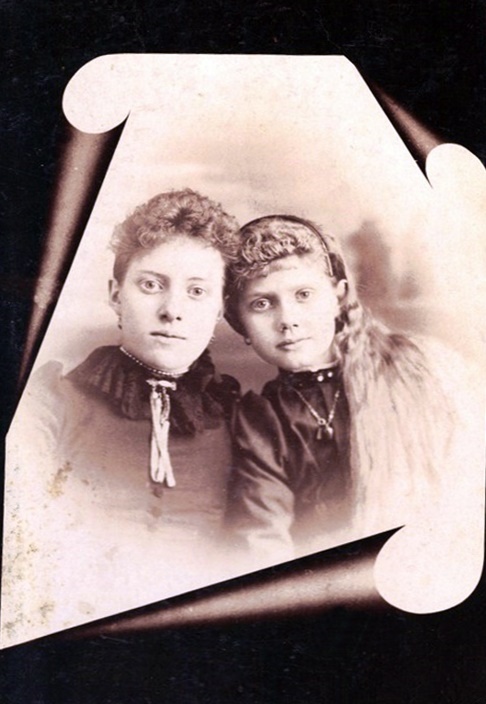


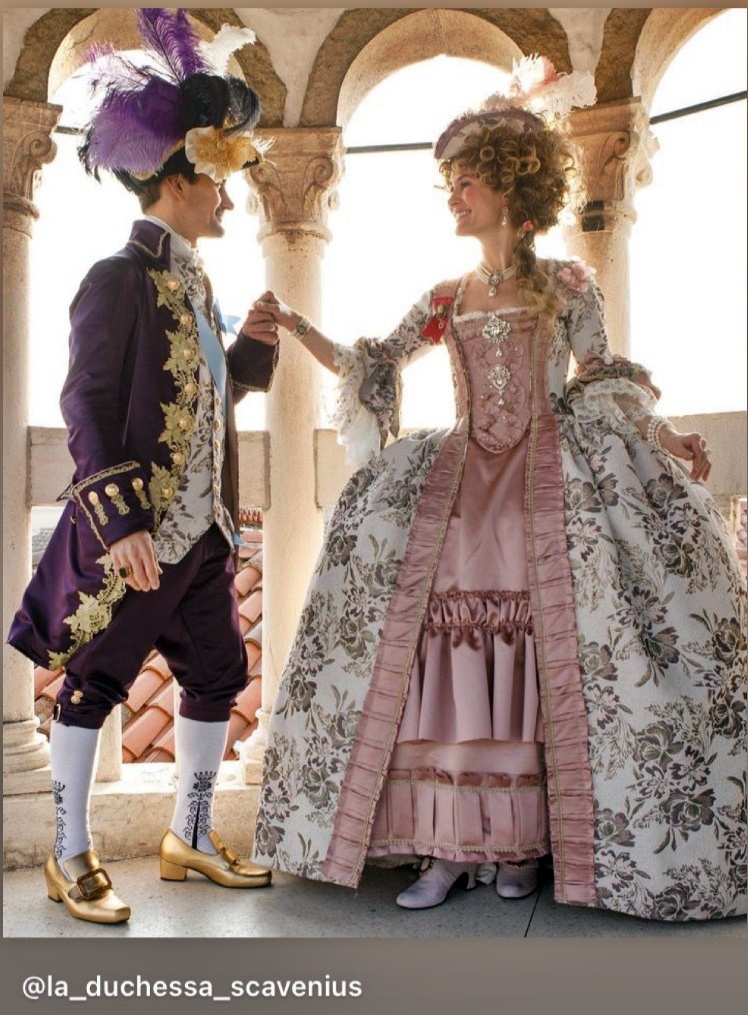
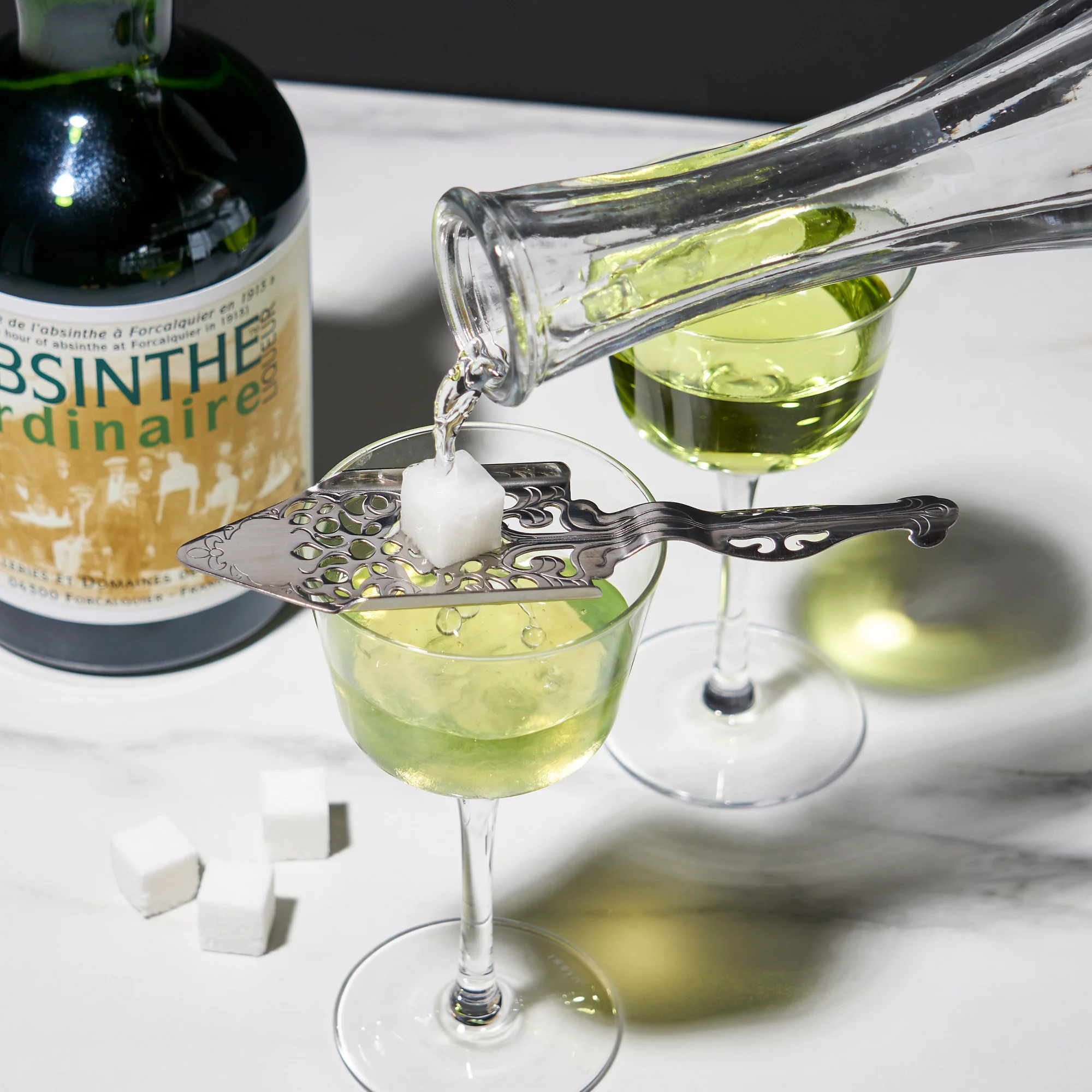



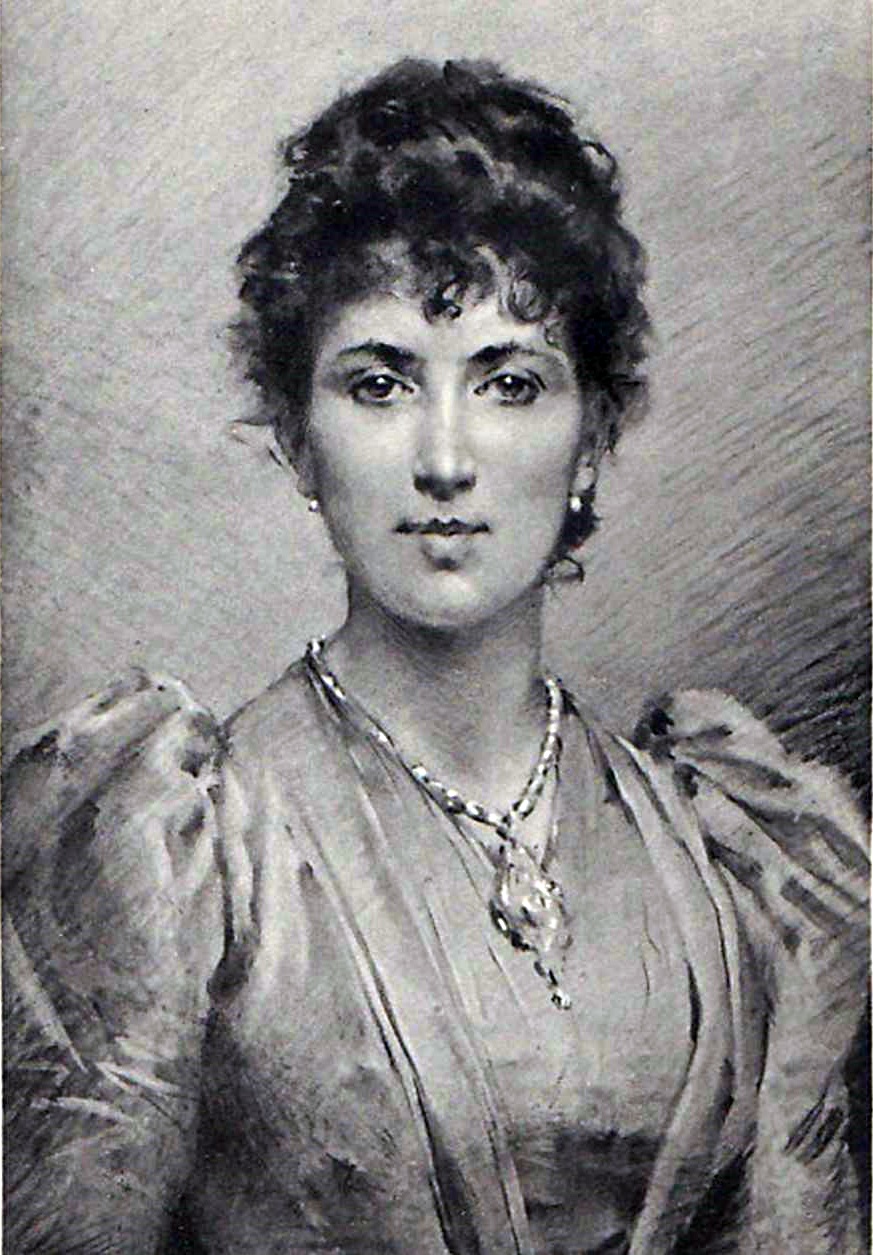



A few of the cards can be explained by Germanic and other central European holiday traditions: 1) The “Demon” figure in cards #3 and 4 is likely Krampus, who in some traditions was St. Nicholas’ “bad twin.” He may have been conflated with “Schwartze Peter,” another “scary” figure and traditional companion of St. Nicholas. Both were believed to accompany St. Nicholas to punish children who misbehaved (while St. Nicholas “rewarded” the others with presents. 2) In card #5, the birds appear to be drunk, not dead, perhaps reflecting the common practice of drinking and making merry as part of a Victorian Christmas (which could also become a frowned-upon public nuisance, for example drunken sailors on Christmas sometimes delaying the sailing of ships). 3) Card #10: frogs and toads are a symbol of good luck in many cultures, including Spain, Germany, and China. 4) Card #13: this card appears to depict the Christkind (also called Christkindl), who is the traditional Christmas gift-deliverer in many parts of Germany (equivalent to St. Nicholas/Santa Claus elsewhere). The name translates as “Christ Child” but the figure was conflated over time with the Christmas Angel who announces Christ’s birth in nativity plays, and so is usually depicted as a female angel with wings and blond hair. She carries a sack of gifts (much like Santa), including dolls and other toys, and sometimes also decorates the Christmas tree (As depicted on the card). 5) The last card, with bats and babies, may represent the juxtaposition of the old/dying year (the spookiness of bats) with the rebirth symbol of babies representing the year to come.
Dear Janice,
I have enjoyed reading your commentaries on the history of women’s lives. My mother., born in 1912, could remember her mother being laced into a corset. She remembered the cooking and cleaning of the early 20th century and gave thanks for the invention of the washing machine and vacuum cleaner. Her mother and aunts had to put a fire under a cast iron kettle in the yard in order to launder. Imagine dipping sheets into a cauldron and placing them on clothes lines to dry, even in winter when the items froze. Beating the dust out of a rug was no fun, and now we know that the dust was not good for us to breathe, My mother also remembered eating ashcakes cooked in a fireplace by their neighbor lady. I guess I should write a memoir of what my mother told me and pass it on to the next generation.
Yours truly,
Janice Branch Fox
PS “Janice” was my mother’s favorite name.